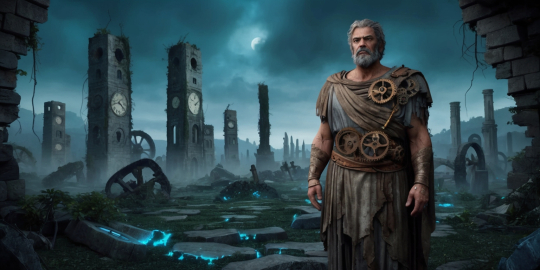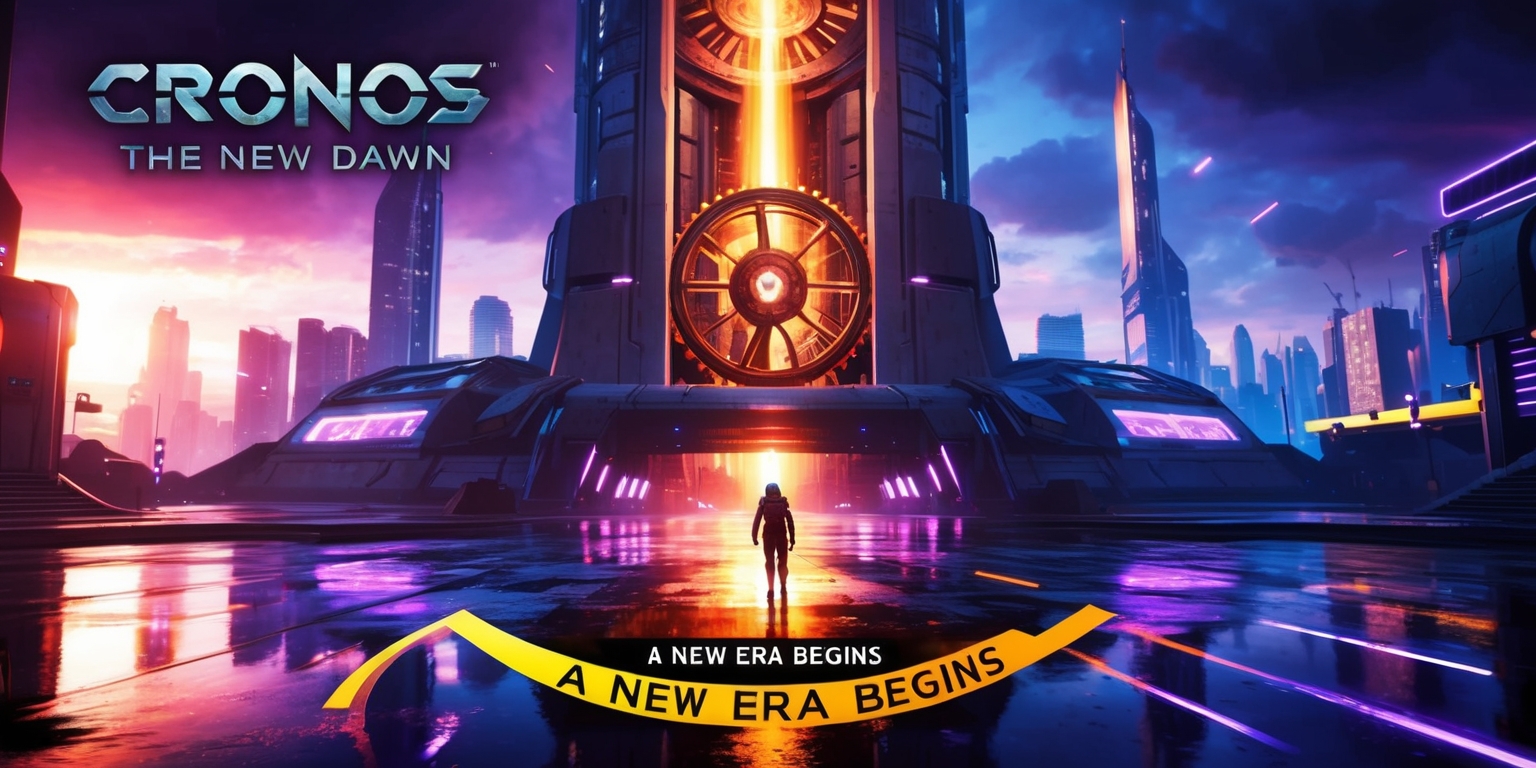
Explore the captivating universe of Cronos: The New Dawn draws players into a haunting realm where the past and future collide in a surreal, dystopic tapestry. Wandering through a landscape that melds the eerie ambiance of survival horror classics with its own distinct elements, the game envelops you in a narrative layered with nostalgic memories and futuristic decay. Every step taken in this fractured reality feels like both an exploration of personal history and a journey through the remnants of a faded Soviet-era dream. The experience is defined by not only the unsettling visuals and intense gameplay, but also by the reflective moments triggered by echoes of bygone eras and cultural contradictions.
Retro-Futuristic Visual Tapestry
The game’s art direction transports players into a retrofuturist version of the Soviet '80s where the decay of the old world meets the stark innovations of imagined futures. The detailed design of dilapidated urban landscapes, inspired by real districts such as Nowa Huta, creates a canvas that reverberates with memory and myth. The Traveler, adorned in a head-to-toe suit with an unmistakable eyeless helmet, symbolizes a bridge between science fiction and horror aesthetics. The striking imagery of shattered buildings, submerged historical relics, and surreal cosmic rifts inject a sense of both dread and beauty into every encounter. Each visual fragment seems to whisper stories of lost eras, reflected in every ruined apartment and mist-laden alley, all inviting the player to decipher the puzzle of a past meshed with an alternate futuristic reality.
Narrative Threads and Memory Echoes
The storyline of Cronos: The New Dawn weaves together a tapestry of human folly, collective memory, and personal duty. As players step into the role of the enigmatic Traveler, they navigate a realm where the psychological weight of history collides with the bizarre transformations of its inhabitants. The narrative pulses with the echoes of personal loss and societal decay, as scattered diary entries and cryptic graffiti reveal haunting stories of despair and resilience. The unfolding tale is reminiscent of literary horror that challenges players to ponder the boundaries between individual autonomy and the oppressive might of an inescapable collective history. Every dialogue and scribbled note encountered contributes to a deeper, unsettling exploration of identity, all while maintaining a delicate balance between introspection and the relentless pace of survival horror.
Explorative Gameplay Strategies
Cronos: The New Dawn offers an intricate gameplay experience that compels players to engage in puzzle-solving alongside tense, strategic combat. The open-ended exploration is laden with puzzles that require manipulation of the environment, such as repairing collapsed structures or reactivating remnants of electrical networks. The Traveler’s zero-gravity boots enable dynamic navigation across precarious platforms suspended in midair, pushing the boundaries of traditional movement within horror settings. Every room and corridor is meticulously designed to stimulate both reflexes and critical thinking, merging physical agility with cerebral challenges. The game’s layered design allows Across a broad spectrum of strategies, ensuring that every individual method is carefully addressed confrontation and puzzle feels uniquely significant. In this way, every progression is a rewarding amalgamation of tactical ingenuity and swift decision-making under duress.
Mechanics of Time and Spatial Anomalies

The innovation in Cronos: The New Dawn is exemplified by its ingenious manipulation of temporal and spatial mechanics. The Traveler’s specialized arsenal, which is capable of interacting with distortions in spacetime, becomes essential in restoring broken links between the crumbling fragments of the game world. This mechanic is not simply a tool for combat but also a means to traverse disparate segments of the environment, effectively repairing or bypassing obstacles. The interplay of time, where environmental puzzles are solved by adjusting the fabric of reality, adds a layer of complexity to the traditional survival horror format. With each manipulation of seemingly chaotic forces, players experience a heightened sense of achievement as they intersect with histories reimagined and futures unfolding, all integrated seamlessly into a gameplay dynamic that blurs the lines between science and supernatural phenomenon.
Inventory Dynamics and Tactical Limitations
Resource management in Cronos: The New Dawn is as much a challenge as the physical enemies and environmental puzzles. Players are forced to contend with a tightly limited inventory system, which compels strategic decisions about what to carry into battle. This scarcity heightens the tension, as every exchanged bullet and consumed resource can mean the difference between survival and a return to the drawing board. The system is designed so that every item, be it weapon upgrades or essential chemicals for crafting, holds substantive value. This dynamic creates a constant balancing act where one must weigh immediate tactical needs against potential future challenges. The game subtly immerses players into its stark economic world, where every choice in resource allocation reinforces the broader atmospheric narrative of scarcity and despair in a crumbling society.
The Unsettling World of Biological Horror
At the epicenter of Cronos: The New Dawn lies its visceral portrayal of biological monstrosities that stray far from typical undead narratives. The inhabitants of this altered reality present a grotesque yet fascinating evolution of horror, where bodily transformations manifest in disturbing unions of flesh and mutation. These abominations are not random; they are intricately designed to blend the remnants of humanity with a nightmarish otherworldliness. Their behavior, where they relentlessly absorb one another to create ever more formidable threats, introduces a terrifying twist to the standard enemy encounters. The visual and interactive horror here is not only in surviving the encounters but also in witnessing the disturbing process of merging that transforms isolated threats into personified chaos. This biological horror is a constant reminder of the uncontrolled forces at play, reflective of the very social transformations the game hints at on a grander scale.
Atmospheric Audio and Emotional Resonance
The auditory design in Cronos: The New Dawn is… meticulously crafted to complement its chilling narrative and visual storytelling. The ambient audio, punctuated by distant echoes, haunting whispers, and the environmental hum of decay, reinforces the solitary and oppressive nature of the game's world. Each auditory cue—from the eerie clamor of collapsing structures to the unsettling murmurs of the mutated residents—acts as a guide through the labyrinth of Nowa Huta's desolation. This subtle yet relentless auditory backdrop deepens the immersive experience, evoking a range of emotions from melancholic nostalgia to heightened suspense. The careful integration of sound with the environmental design ensures that every corridor, every shattered monument resonates with a sense of foreboding and unresolved tragedy, urging the player to listen closely to the untold stories hidden within the ruins.
Philosophical Undertones and Social Commentary
Beyond its tangible threats and intricate mechanics, Cronos: The New Dawn boldly interweaves reflective insights on society, individuality, and collective destiny. The fragmented lives of its characters, echoed in obscure diary entries and half-erased messages, hint at broader themes of solidarity, duty, and betrayal. The narrative gestures towards the conflict between personal yearning and the overarching demands of communal existence—a reminder of historical pressures faced during periods of ideological extremism. In a world where individuals are both nurtured and subsumed by the collective, the game challenges players to ponder the costs of social uniformity and the value of personal identity. These philosophical musings are not overt but are woven deeply into the grim fabric of the environment, manifesting through both visual symbolism and subtle narrative cues that provoke thought with every step taken deeper into the abyss.
Unexpected Challenges and Tactical Innovation
Throughout the game, players are consistently thrown into scenarios that test not just their reflexes, but their ability to adapt and devise creative combat strategies. The multifaceted enemy designs, especially those that can merge and evolve dynamically, force the player into a constantly shifting battle landscape. Each encounter is a test of tactical foresight—balancing precision targeting, crowd control, and the judicious use of scarce resources. This relentless pressure transforms routine engagements into high-stakes ventures where one miscalculated moment can result in a sudden, calamitous setback. The design ensures that the thrill of survival is interlaced with moments of strategic brilliance, rewarding innovative approaches. The game's mechanics encourage experimentation with alternative methods, whether it be through betraying conventional combat styles or exploiting the environment, thereby enriching the overall experience with layers of tactical depth.
Character Depth and Emotional Intricacies
The Traveler, as the central figure of Cronos: The New Dawn, is a character defined by layers of emotional complexity and an evolving personal narrative. Beyond her imposing appearance, she embodies the tensions between duty and desire—a symbol of Unwavering determination amid the splintered social fabric. The encounters with consciousness fragments of past inhabitants, which bestow both enhancements and haunting memories, gradually reveal a mosaic of human experiences. Each interaction forces her to confront not just external dangers, but also her internal conflicts and suppressed longings. It is these moments of introspection, punctuated by surreal flashbacks and emotional disturbances, that add a profound psychological depth to the gameplay. The character’s journey is both a physical and emotional odyssey, creating an engaging A story that strikes a chord on a profoundly personal level while reflecting broader societal themes.